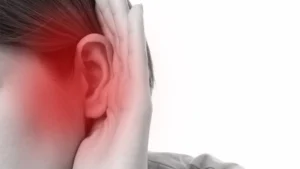Noise-Induced Hearing Loss (NIHL): Prevention and Management
Noise-Induced Hearing Loss (NIHL) is a common condition that occurs when individuals are exposed to loud noises for a long period of time, resulting in damage to the inner ear. It is important to understand the symptoms, causes, diagnosis, and tests associated with NIHL in order to effectively manage and prevent this condition. By implementing proper management techniques and proactive preventive measures, individuals can safeguard their hearing health and improve their overall quality of life.

Overview
Noise-Induced Hearing Loss is characterized by a gradual or sudden loss of hearing due to exposure to excessive noise levels. It commonly affects individuals who work in industries such as construction, manufacturing, and music. Prolonged exposure to loud noises, such as machinery, concert venues, or personal music players, can damage the hair cells within the inner ear, leading to permanent hearing loss. This condition can have a significant impact on an individual’s ability to communicate, perform daily activities, and enjoy social interactions.
Symptoms and Causes
The symptoms of Noise-Induced Hearing Loss vary from mild to severe. Individuals may experience a gradual loss of hearing over time or a sudden decrease in their ability to hear certain frequencies. Common symptoms include difficulty understanding speech, asking others to repeat themselves frequently, ringing or buzzing in the ears (tinnitus), and a feeling of fullness or pressure in the ears. The main cause of NIHL is prolonged exposure to high-intensity sound levels, typically above 85 decibels, which can damage the delicate structures of the inner ear. Additionally, exposure to a sudden loud noise, even for a short duration, can also result in temporary or permanent hearing loss.
Diagnosis and Tests
Diagnosing Noise-Induced Hearing Loss typically involves a comprehensive evaluation by an audiologist or an ear, nose, and throat specialist. The healthcare professional will assess the patient’s medical history, conduct a physical examination, and perform various hearing tests. Pure-tone audiometry is often used to determine the extent of hearing loss and identify the specific frequencies affected. Additionally, more advanced tests such as otoacoustic emissions (OAE) and tympanometry may be conducted to assess the functionality of the inner ear and middle ear. These tests help in accurately diagnosing NIHL and excluding other potential causes of hearing loss.
Management and Treatment
While there is no cure for Noise-Induced Hearing Loss, there are management and treatment options available to improve the individual’s hearing and minimize the impact on their daily life. The use of hearing aids or assistive listening devices can assist in amplifying sounds and enhancing communication. Additionally, auditory training and counseling may be provided to help individuals adapt to their hearing loss and develop coping strategies. In severe cases, cochlear implants may be considered as an option to restore hearing. It is crucial for individuals with NIHL to protect their remaining hearing by avoiding further exposure to loud noises and using earplugs or earmuffs in noisy environments.
Prevention
Preventing Noise-Induced Hearing Loss is key to maintaining good hearing health. It is important to limit exposure to loud noises by reducing the volume of personal music players, wearing protective earplugs or earmuffs in noisy environments, and keeping a safe distance from loud sources. Regular breaks from noise exposure can also help reduce the risk. Employers should implement hearing conservation programs in industries with high noise levels, provide appropriate personal protective equipment, and educate employees about the risks associated with noise exposure. By taking proactive measures, individuals can significantly reduce their chances of developing NIHL.
Outlook / Prognosis
The outlook for individuals with Noise-Induced Hearing Loss depends on various factors such as the severity of the condition, duration of noise exposure, and adherence to management techniques. While NIHL is usually irreversible, individuals can benefit from early diagnosis and intervention to minimize further damage and improve their quality of life. With appropriate management strategies and hearing devices, individuals can regain some functional hearing and effectively communicate with others. It is essential to prioritize hearing health and take necessary preventive measures to protect one’s hearing throughout life.
Frequently Asked Questions
-
Can NIHL be reversed?
No, Noise-Induced Hearing Loss is typically permanent. However, early intervention and management strategies can help improve an individual’s quality of life by utilizing hearing aids or assistive devices and developing coping skills.
-
What are some common sources of noise that can cause NIHL?
Common sources of noise that can lead to NIHL include machinery, power tools, loud music or concerts, firearms, and fireworks. It is important to limit exposure to these loud noises and use protective devices when necessary.
-
How can I protect myself from NIHL?
Protecting yourself from NIHL involves minimizing exposure to loud noises. This can be achieved by wearing hearing protection, limiting time spent in noisy environments, and keeping the volume at a safe level on personal music players. Regular hearing check-ups are also crucial to detect any early signs of hearing loss.
Conclusion
Noise-Induced Hearing Loss is a preventable condition that can have a significant impact on an individual’s daily life. By understanding the symptoms, causes, diagnosis, and tests associated with NIHL, individuals can take proactive measures to protect their hearing health and prevent further damage. It is essential to prioritize hearing protection, especially when exposed to loud noises, and seek professional help in case of any changes in hearing abilities. By adopting proper management techniques and implementing preventive measures, individuals can enjoy better hearing health and improve their overall well-being.